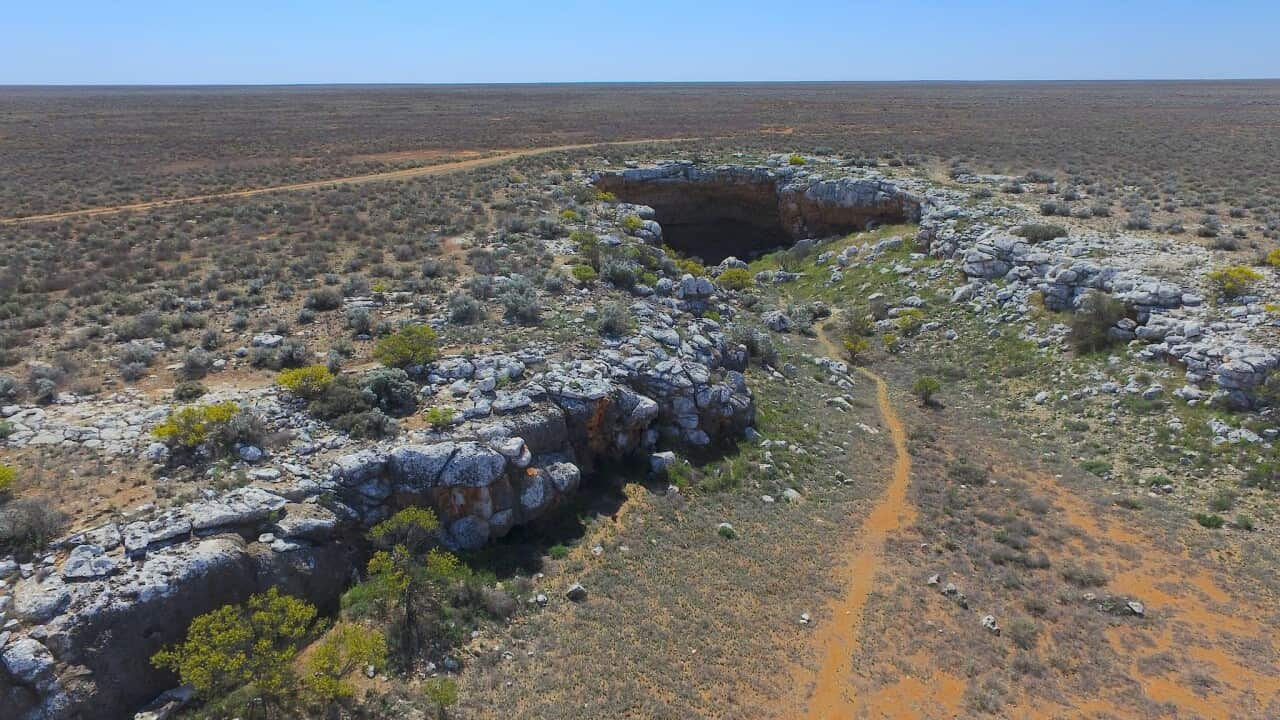Vandals have destroyed ancient rock art at Koonalda Cave in South Australia after breaking in through barbed wire fencing.
Authorities are investigating the destruction of the art, believed to be around 30,000 years old, which is sacred to Mirning Traditional Owners of the Nullarbor Plain.
Nullarbor Parks Advisory Committee chairman and Mirning man, Clem Lawrie told the Adelaide Advertiser newspaper he was horrified by the destruction.
“It breaks me inside. It’s our heritage and it’s an internationally recognised site. I was shocked, horrified and disappointed,” he said.
Mr Lawrie said that his repeated requests to the state government for better protection of the site had fallen on deaf ears.
“There’s a whole chain of letters that we sent off (to government),” he said.
“There was no reply from the State Heritage Committee, no reply from the Aboriginal Affairs Department.”

The 30,000-year-old artwork in Koonalda cave was graffitied. Credit: Mirning cultural group
"Koonalda Cave is of outstanding heritage value to the nation for its role in transforming our contemporary understanding of the extraordinary age of Aboriginal art, archaeology and occupation in Australia," it reads.
"The place is of great importance for its contribution to the history of Aboriginal occupation and is of particular significance for the Mirning people."
'The worst kind of vandalism'
SA Attorney-General and Aboriginal Affairs Minister Kyam Maher said those found responsible for the damage could face criminal prosecution.
"This is quite frankly shocking. These caves are some of the earliest evidence of Aboriginal occupation of that part of the country," he told ABC Radio on Wednesday.
"What appears to have happened is vandals have deliberately and wilfully removed the barbed wire sections (of the fence), got under ... and vandalised this irreplaceable, precious site.
"On that very soft rock inside the cave, they've used their fingers and drawn over the top of this very, very old artwork."
Individuals convicted of breaching SA's Aboriginal heritage protection laws face up to six months in prison or a $10,000 fine.
Mr Maher said the government was committed to increasing those penalties which have remained in place since 1988.
He said authorities were examining other protections that could be put in place at the national heritage-listed site, including cameras.
"This isn't some sort of accidental disturbance," he said.
"This is someone who has deliberately got through fencing, barbed wire and gone in and destroyed this. This is the worst kind of vandalism that I can think of."












